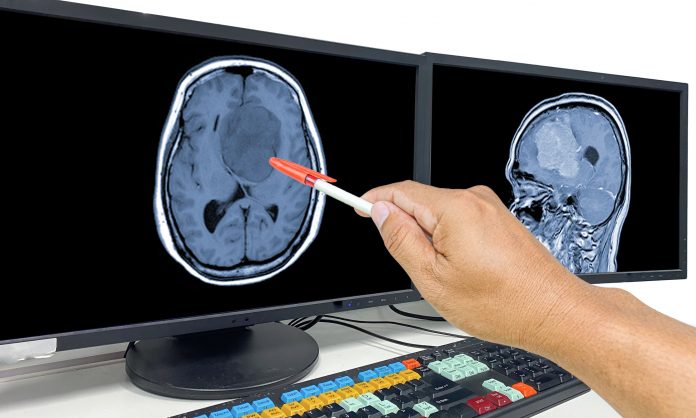
Groundbreaking research from the University of Nottingham in the U.K. has shown how the self-destruction of glioblastoma cells can be triggered by harnessing the power of electromagnetic fields via miniature bio-nanoantennae.
Although still in the early stages of development, the technology has the potential to make a huge impact on this notoriously difficult to treat disease as well as the field of oncology in general.
Speaking to Inside Precision Medicine, lead researcher Dr Frankie Rawson, from the School of Pharmacy, said the development of the gold bipolar nanoelectrodes, termed bio-nanoantennae, was based on earlier research that revealed all cells, particularly cancer cells, possess electrical activity pivotal to cancer progression.
“This electrical activity propels rapid cancer cell proliferation, making it a hallmark of the disease,” Rawson explains. “Our insight was that by manipulating these underlying electrical pathways, we could potentially impede or even eliminate cancer cells. However, at that juncture, no suitable technology existed to precisely target these pathways and exert control over cell growth or the eradication of cancer cells.”
The bio-nanoantennae, which enter the cells via endocytosis and are a similar size to intracellular molecules, work like miniature batteries, allowing the investigators to introduce electricity into the cancer cells and subsequently trigger apoptosis.
“Our pioneering concept involved the potential regulation of electron transfer within cytochrome C by employing electromagnetic fields, particularly when linked to our nanoantennae,” says Rawson. When cytochrome C releases an electron, it initiates a cascade of events that lead to cell death.
“These nanoantennae effectively localized a voltage that directed an electron away from the [cytochrome C] protein. Consequently, we could exert precise control over whether the protein would donate an electron or not, effectively triggering apoptosis,” he explains. “This hypothesis served as the bedrock of our research and ultimately stood as a validated breakthrough.”
The researchers showed that when the bio-nanoantennae were electrically stimulated in glioblastoma cells for 12 hours, there was a 50% reduction in cellular metabolic activity that correlated with increased cell death.
Unexpectedly, the effect was specific to the glioblastoma cells and was not observed in cortical astrocytes.
Further analysis showed the glioblastoma cells exhibit upregulated pathways that are absent in their healthy astrocyte cell counterparts, from which the cancer cells originate. Rawson notes: “This suggests that these pathways play a pivotal role in why our technology specifically targets cancer cells without affecting healthy ones. However, it’s important to note that comprehending the intricacies of this mechanism requires further investigation, and it’s too early to draw definitive conclusions.”
Another “astounding” finding, according to Rawson, was the discovery that the intracellular electricity generation relies on a quantum mechanical effect. “For decades, we’ve recognized that quantum effects play a role in controlling biological processes, but until now, we lacked a means to control them in a meaningful and selective manner. This marks the first instance of developing a tool to precisely manage a quantum mechanical effect within cells, opening up exciting possibilities for understanding and controlling various aspects of biology.”
The quantum mechanical process in question, referred to by the researchers as quantum biological tunneling, is the movement of the electron away from the bio-nanoantenna through a biological barrier to initiate apoptosis.
“To put it simply, without quantum biological tunneling, we wouldn’t see the signal that initiates apoptosis. It’s a bit like a quantum signal. And because the end result of this whole process is the death of the cancer cell, it’s like a quantum therapy. So, you can think of any treatment that uses a quantum phenomenon to achieve its effect as a quantum therapy,” Rawson remarks.
The researchers have also demonstrated similar effects in other types of cancer cells including bile duct cancer, but it will be some time before the technology reaches the clinic.
Yet the team has already taken important initial steps to translate the work to practical applications including filing a patent and securing funding from the UK Medical Research Council to conduct early proof-of-concept experiments in vivo.
“Our next objectives involve advancing our work to the in vivo stage, where we’ll refine the stimulation device for applying the electrical input we’ve developed,” says Rawson. “Additionally, we’ll focus on improving the delivery system for the bio-nanoantenna after addressing the primary tumor. Finally, we’ll need to conduct clinical trials to demonstrate the safety and efficacy of our approach, aligning with our cautious but high expectations.”
The study findings are published in Nature Nanotechnology.













